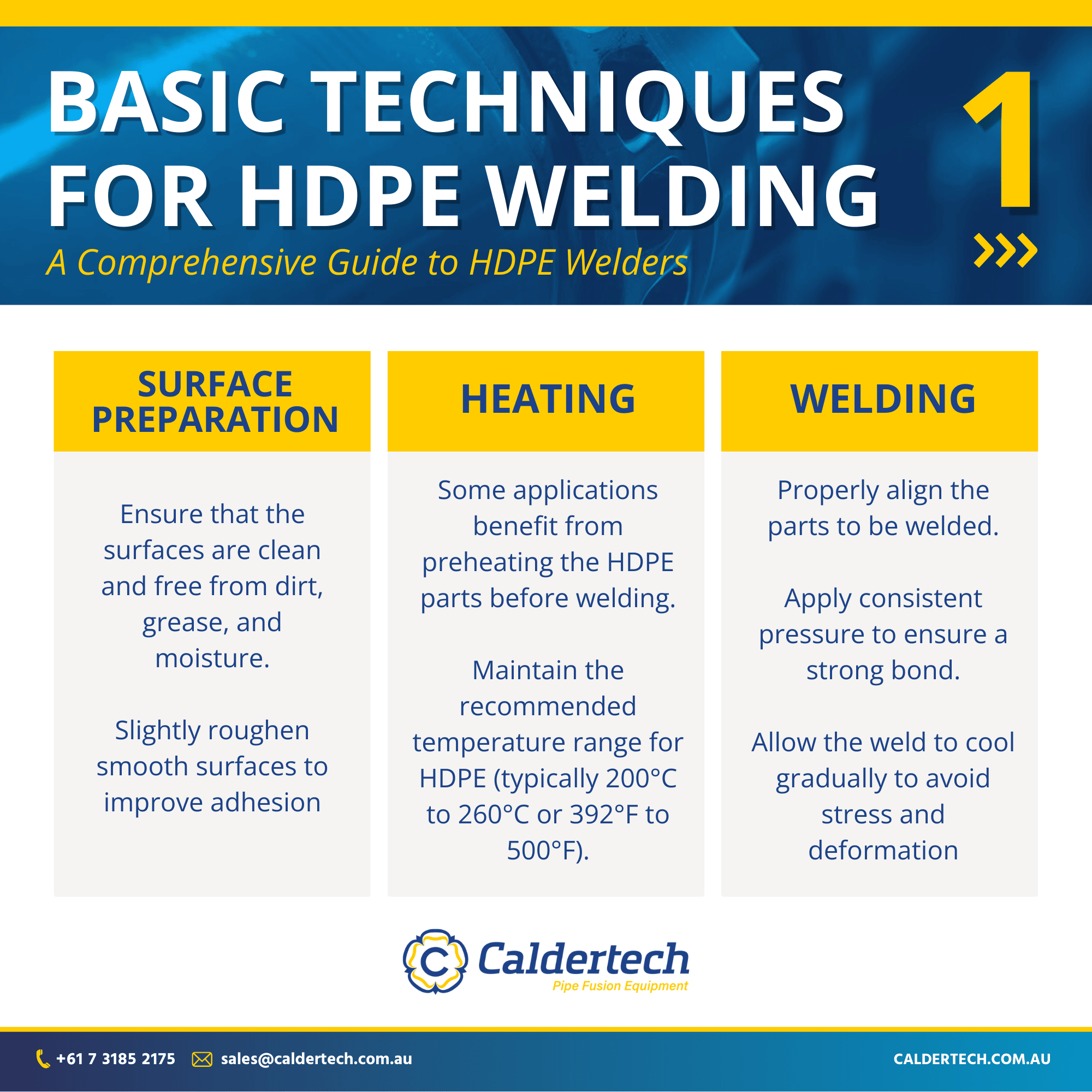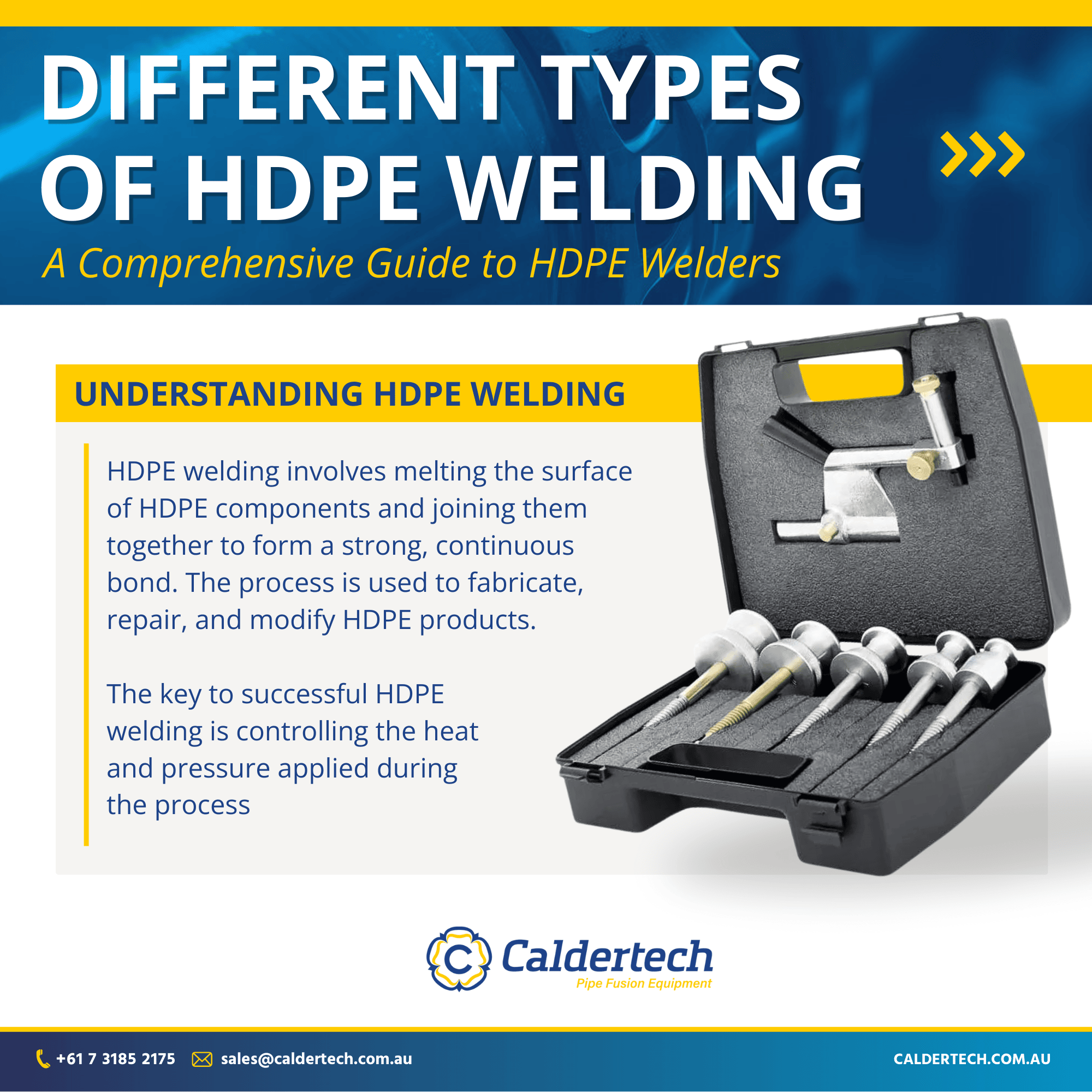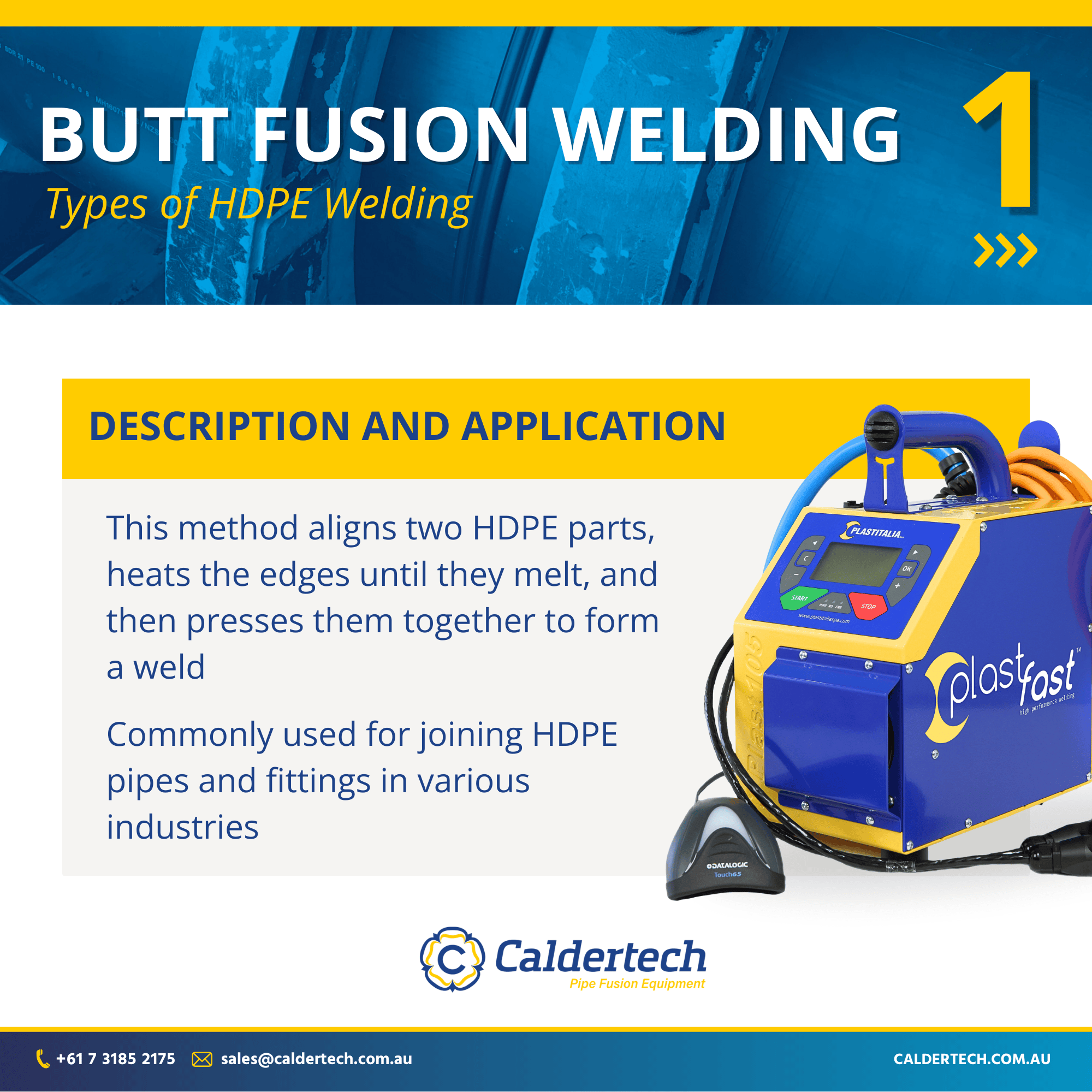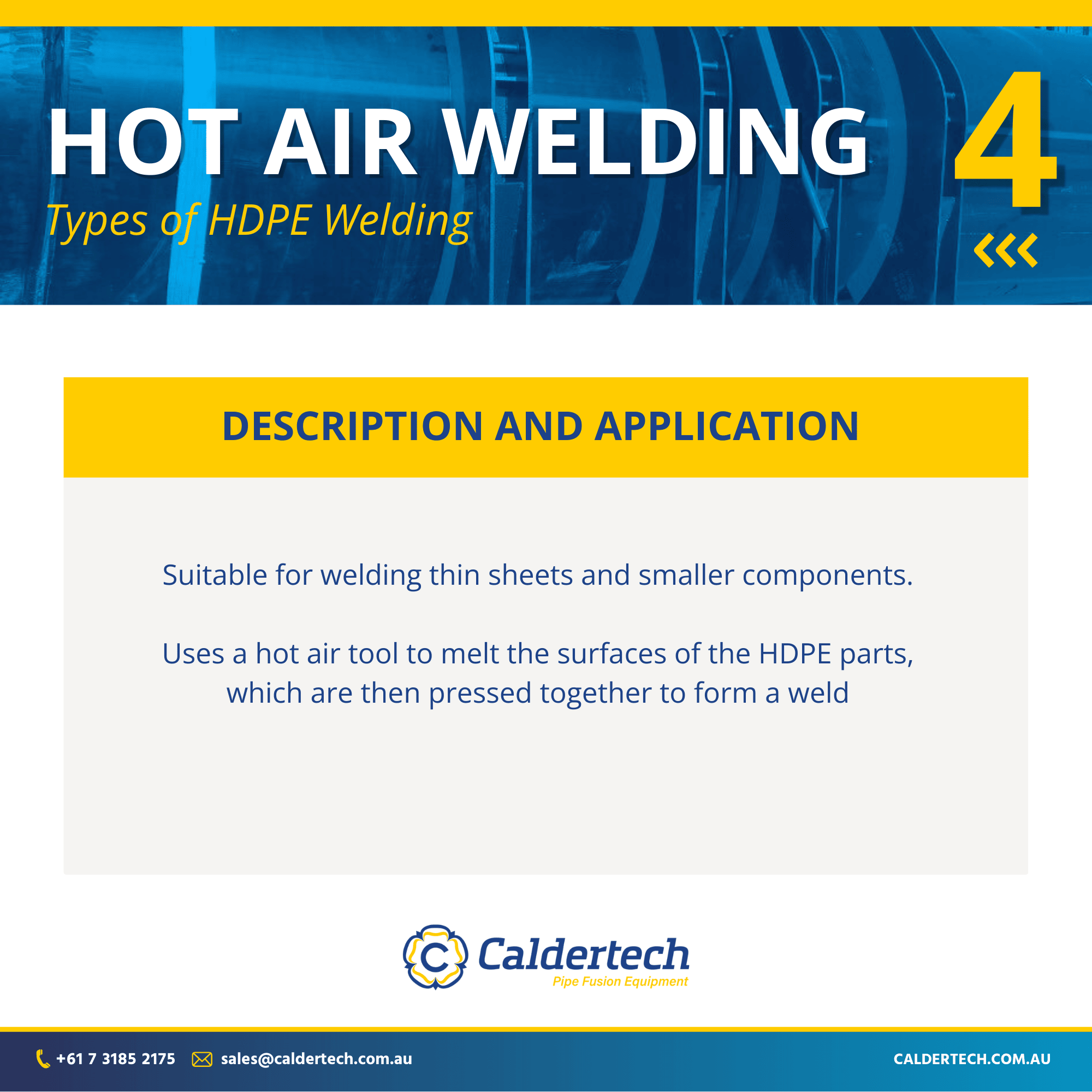High-Density Polyethylene (HDPE) welding is a crucial process in various industries, including construction, pipeline installation, and plastic fabrication. Mastering this technique involves understanding the material, using the right tools, and applying precise methods to ensure strong, reliable welds. This guide explores essential techniques and tools for successful HDPE welding.
HDPE welding involves joining HDPE plastic parts through heat and pressure. The process creates a durable bond that is resistant to environmental stresses and chemical attacks. HDPE is known for its toughness and flexibility, making it ideal for various applications, but it requires specific welding techniques to achieve optimal results.
Butt Fusion Welding
This method aligns two HDPE parts, heats the edges until they melt, and then presses them together to form a weld.
Applications: Commonly used for joining HDPE pipes and fittings in various industries.
Extrusion Welding
Involves feeding a molten HDPE filler rod into the joint while heating the base material to create a strong bond.
Applications: Ideal for welding thicker sections or repairing large HDPE structures.
Socket Fusion Welding
Used for connecting HDPE pipes and fittings by inserting one piece into another and heating the surfaces until they fuse.
Applications: Often used in plumbing and pipe installations.
Hot Air Welding
Uses a hot air tool to melt the surfaces of the HDPE parts, which are then pressed together to form a weld.
Applications: Suitable for welding thin sheets and smaller components.
Essential Tools and Equipment
HDPE Welding Machines
Butt Fusion Machine
Function: Aligns and heats pipe ends to join them.
Features to Consider: Adjustable temperature control, precise pressure settings, and durability.
Extrusion Welder
Function: Feeds molten HDPE into the joint while heating the base material.
Features to Consider: Consistent feed rate, adjustable temperature, and ergonomic design.
Hot Air Welder
Function: Uses a stream of hot air to melt HDPE surfaces.
Features to Consider: Variable temperature settings, nozzle options, and ease of use.
Temperature and Pressure Control Tools
Digital Thermometers
Function: Measures and monitors welding temperatures.
Features to Consider: Accuracy, range, and ease of calibration.
Pressure Gauges
Function: Ensures proper pressure is applied during welding.
Features to Consider: Precision, durability, and compatibility with welding machines.
Preparation and Maintenance Tools
Surface Cleaners
Function: Removes contaminants from HDPE surfaces.
Features to Consider: Compatibility with HDPE, effectiveness, and ease of use.
Roughing Tools
Function: Roughens smooth surfaces to enhance adhesion.
Features to Consider: Abrasive quality, ease of use, and durability.
Basic Techniques for HDPE Welding
Surface Preparation
Cleaning: Ensure that the surfaces are clean and free from dirt, grease, and moisture.
Roughening: Slightly roughen smooth surfaces to improve adhesion.
Heating
Preheating: Some applications benefit from preheating the HDPE parts before welding.
Welding Temperature: Maintain the recommended temperature range for HDPE (typically 200°C to 260°C or 392°F to 500°F).
Welding
Alignment: Properly align the parts to be welded.
Pressure Application: Apply consistent pressure to ensure a strong bond.
Cooling: Allow the weld to cool gradually to avoid stress and deformation.
Advanced Practices and Techniques
Advanced Welding Techniques
Multi-Layer Welding: Involves welding multiple layers of HDPE for added strength and durability.
Automatic Welding Systems: Utilize automated systems for precise and efficient welding of large or complex projects.
Troubleshooting and Quality Control
Common Issues: Address issues such as weak joints, surface defects, and inconsistent welds.
Inspection: Use techniques like ultrasonic testing or visual inspection to ensure weld quality.
Maintenance and Calibration
Regular Maintenance: Perform routine maintenance on welding machines to ensure optimal performance.
Calibration: Regularly calibrate temperature and pressure controls to maintain accuracy.









